Other uses
- Imhotep Institute Charter High School in Philadelphia, Pennsylvania
Imhotep (fl. 27th century BC) was an ancient Egyptian architect, physician, and court official.
Imhotep can also refer to:

Imhotep was an Egyptian chancellor to the Pharaoh Djoser, possible architect of Djoser's step pyramid, and high priest of the sun god Ra at Heliopolis. Very little is known of Imhotep as a historical figure, but in the 3,000 years following his death, he was gradually glorified and deified.
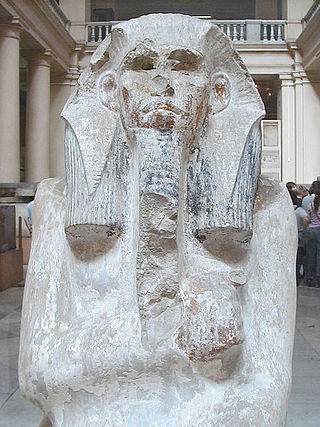
Djoser was an ancient Egyptian pharaoh of the 3rd Dynasty during the Old Kingdom, and was the founder of that epoch. He is also known by his Hellenized names Tosorthros and Sesorthos. He was the son of King Khasekhemwy and Queen Nimaathap, but whether he was also the direct successor to their throne is unclear. Most Ramesside king lists identify a king named Nebka as preceding him, but there are difficulties in connecting that name with contemporary Horus names, so some Egyptologists question the received throne sequence. Djoser is known for his step pyramid, which is the earliest colossal stone building in ancient Egypt.
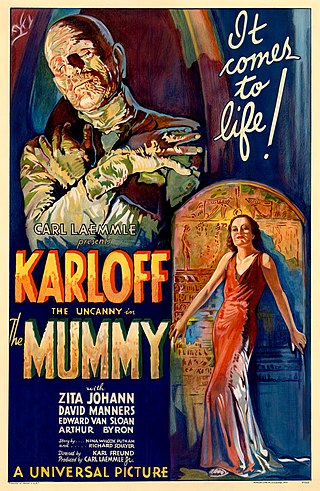
The Mummy is a 1932 American pre-Code supernatural horror film directed by Karl Freund. The screenplay by John L. Balderston was adapted from a treatment written by Nina Wilcox Putnam and Richard Schayer. Released by Universal Studios as a part of the Universal Classic Monsters franchise, the film stars Boris Karloff, Zita Johann, David Manners, Edward Van Sloan and Arthur Byron.
Thutmose is an anglicization of the ancient Egyptian personal name dhwty-ms, usually translated as "Born of the god Thoth".
The Pharos of Alexandria was an ancient lighthouse, one of the Seven Wonders of the ancient world.
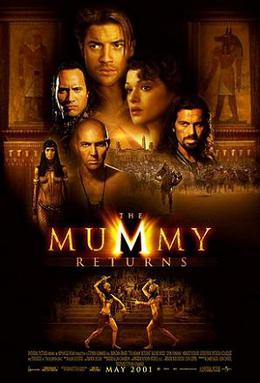
The Mummy Returns is a 2001 American adventure horror film written and directed by Stephen Sommers, starring Brendan Fraser, Rachel Weisz, John Hannah, Arnold Vosloo, Oded Fehr, Patricia Velásquez, Freddie Boath, Alun Armstrong, and Dwayne Johnson in his film acting debut. The film is a sequel to the 1999 film The Mummy and was distributed by Universal Pictures.

The Mummy is an American animated series produced by Universal Cartoon Studios based on the 1999 film of the same name. It premiered on Kids' WB on The WB network on September 29, 2001. It is set in 1938. It was retooled and renamed The Mummy: Secrets of the Medjai for its second and final season, which began on February 8, 2003. The show was cancelled on June 7 the same year. Reruns of the show still aired on Kids' WB until it was removed from its Saturday morning lineup around July 2003.
Sebayt is the ancient Egyptian term for a genre of pharaonic literature. sbꜣyt literally means "teachings" or "instructions" and refers to formally written ethical teachings focused on the "way of living truly". Sebayt is considered an Egyptian form of wisdom literature.

Karol Myśliwiec is a Polish egyptologist, known for his ongoing efforts at Saqqara to discover the tomb of Imhotep.
Hori may refer to:
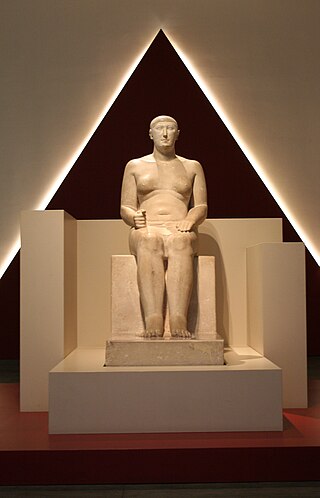
The vizier was the highest official in ancient Egypt to serve the pharaoh (king) during the Old, Middle, and New Kingdoms. Vizier is the generally accepted rendering of ancient Egyptian tjati, tjaty etc., among Egyptologists. The Instruction of Rekhmire, a New Kingdom text, defines many of the duties of the tjaty, and lays down codes of behavior. The viziers were often appointed by the pharaoh. During the 4th Dynasty and early 5th Dynasty, viziers were exclusively drawn from the royal family; from the period around the reign of Neferirkare Kakai onwards, they were chosen according to loyalty and talent or inherited the position from their fathers.

Papyrus is a Belgian comic book series, written and illustrated by Lucien De Gieter. The story takes place in Ancient Egypt. It was first published in 1974 in Spirou magazine in the form of episodes.

Imhotep is the main antagonist of the 1932 film The Mummy. He is also the main antagonist in the 1999 remake and its 2001 sequel The Mummy Returns. Sofia Boutella plays a female version of this character named Ahmanet in the 2017 reboot. Imhotep is loosely inspired by the historical figure Imhotep, a noted polymath and counselor to the Pharaoh Djoser in the 27th century BC.
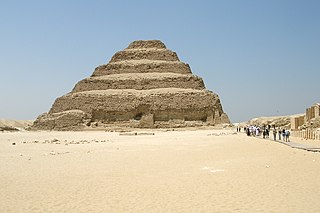
The Third Dynasty of ancient Egypt is the first dynasty of the Old Kingdom. Other dynasties of the Old Kingdom include the Fourth, Fifth and Sixth. The capital during the period of the Old Kingdom was at Memphis.
This page list topics related to ancient Egypt.
'Ancient Egyptian philosophy' is a term used by some authors to refer to ancient Egyptian literature which is considered to have a philosophical aspect, commonly referred to as 'wisdom literature'. There is some debate regarding its true scope and nature.

Imhotep is a crater on Mercury. It has a diameter of 159 kilometers. Its name was adopted by the International Astronomical Union in 1976. Imhotep is named for the Ancient Egyptian architect Imhotep, who lived from 2686 to 2613 BCE.
Renpetneferet is a minor goddess who is credited as being either the sister or the wife of Imhotep in Late Period Egyptian texts. There is no evidence of an individual by this name existing during the reign of King Djoser, although similar names were being used for women during the fourth dynasty.
The royal sealer, also called royal seal-bearer, was an Ancient Egyptian official position and title. The name literally means "sealer of the king of Lower Egypt," but it seems unlikely that the position was ever geographically limited. In the Early Dynastic period and Old Kingdom, it was one of the most important positions in Egypt. The bearer seems to have headed the treasury and had significant symbolic power as an official representative of the Pharaoh. As a "ranking title," it indicated the bearer's pre-eminence in court. In the late Middle Kingdom, it was revived as a ranking title borne by many of the highest officials in the court. This apparently coincided with an increased prominence of seals in the Egyptian administration, as part of a centralisation of the bureaucracy. The title spread more widely in the Second Intermediate period, diluting its power.